Decoding the Latest Shifts in US Insurance Shopping
Consumer behavior in the insurance market is constantly evolving, influenced by a complex interplay of economic factors, market conditions, and individual needs. A recent report sheds light on some significant shifts in how Americans are approaching their insurance coverage, particularly when it comes to major categories like auto and home policies. Understanding these dynamics, including the latest US home auto insurance shopping trends, is crucial for both insurers and policyholders alike. It reveals patterns in shopping frequency, switching rates, and the underlying reasons driving these decisions.
The landscape of insurance purchasing is not static; it’s a dynamic environment shaped by everything from inflation rates to supply chain issues. These external pressures directly impact the cost of claims and, consequently, the premiums consumers face. As a result, people are paying closer attention to their insurance expenses and exploring their options with varying degrees of intensity. This analysis will dive into the specific trends observed in the auto and home insurance sectors and discuss how broader economic forces are playing a pivotal role in shaping these patterns.
Examining shopping and switching rates provides valuable insights into consumer sentiment and market competitiveness. A high shopping rate suggests that policyholders are actively looking for alternatives, possibly due to dissatisfaction with pricing, service, or coverage. A high switching rate indicates that these shopping efforts are successfully leading to policy changes. Conversely, a low switching rate, even amid high shopping, might suggest that while consumers are exploring, they aren’t finding compelling enough reasons to make a move, perhaps due to limited options or loyalty programs.
These trends have tangible implications for the industry. Insurers must adapt their strategies to retain existing customers and attract new ones in a marketplace characterized by informed, albeit sometimes hesitant, consumers. For individuals, staying informed about these trends can empower them to make better decisions about their own coverage needs and costs. The goal is to find the right balance between adequate protection and affordable premiums, a challenge amplified by the current economic climate.
The reference material indicates that these shifts are not isolated incidents but rather reflect broader economic forces at play. This suggests that the changes we are seeing in insurance shopping behavior are part of a larger economic narrative affecting households across the country. Delving into the specifics of each insurance type – auto, home, and even renters – offers a more granular view of how these trends manifest differently depending on the coverage needed.
For example, the factors driving someone to shop for a new auto policy might differ significantly from the reasons someone seeks a new home insurance provider. Vehicle repair costs, driving history, and the type of car are major considerations for auto, while property values, location-specific risks (like proximity to coastlines or fault lines), and the cost of building materials heavily influence home insurance decisions. Understanding these nuances is key to fully grasping the current state of US home auto insurance shopping trends and how they impact different policyholders.
Auto Insurance Shopping Trends More Lookers, Fewer Switchers?
In the realm of auto insurance, recent data from Q1 2025 highlights a notable dynamic: an increase in shopping activity coupled with a relatively stable switching rate. The shopping rate reached 14.1%, showing a modest rise from the previous quarter and a more significant jump of 1.3 percentage points compared to the same period the prior year. This indicates that more drivers are actively browsing for different auto insurance options, perhaps seeking better rates or different coverage terms.
Despite this heightened interest in shopping around, the actual percentage of consumers switching their auto insurance providers remained largely unchanged at 4.1%. This was a slight dip from Q4 2024 but still represented an improvement over the previous year’s switching rate. The data suggests a scenario where consumers are exploring their options more frequently, yet fewer are ultimately deciding to change insurers. Several factors could contribute to this phenomenon.
One possible explanation is that while price remains a significant driver for shopping, the competitive landscape might not be offering drastically different rates that compel policyholders to switch. Another factor could be the ease of the shopping process versus the perceived hassle of actually transferring a policy. Sometimes, exploring options is easier than committing to the paperwork and transition involved in switching providers.
The auto insurance market itself is undergoing shifts. Insurers are reportedly moving towards more traditional underwriting approaches. This means focusing on factors like driving history, vehicle type, and location with renewed emphasis. Their aim is to grow their policy base while simultaneously adjusting premiums, potentially increasing costs for drivers deemed to be higher risk. This strategy aims to balance market growth with maintaining profitability in a challenging environment.
A major challenge for auto insurers, and consequently for policyholders, is the rising cost of claims. This increase is primarily driven by the rising prices of vehicles and the escalating costs of repairs. Modern cars are equipped with complex technology that is expensive to fix, and ongoing supply chain issues can further delay repairs and drive up the cost of parts. These inflationary pressures on repair costs directly impact what insurers pay out in claims, which in turn influences the premiums they charge.
These rising costs mean that even if a consumer finds a slightly lower quote elsewhere during their shopping process, the overall premium landscape might still be higher than they anticipated, making the perceived benefit of switching less attractive. Insurers are grappling with how to absorb or pass on these increased costs while remaining competitive and profitable.
For consumers, this trend underscores the importance of understanding the factors that impact their auto insurance rates. Beyond shopping around, maintaining a good driving record, considering telematics programs if available, and bundling policies can potentially offer ways to manage costs. Understanding specific coverages, such as liability, collision, comprehensive, and uninsured motorist coverage, and ensuring they meet state requirements is also essential.
The current environment suggests that while many people are curious about saving money on their auto insurance, the actual act of switching is not keeping pace with that curiosity. This could point to a market where price increases are widespread, making it hard to find a significantly cheaper alternative, or it could indicate a level of inertia among consumers despite rate pressures. The specific reasons behind this gap between shopping and switching are complex and likely vary from driver to driver.
Exploring options is always a good strategy, especially when rates are rising. Consumers should look beyond just the base premium and compare coverage levels, deductibles, and customer service when considering a new provider. Consulting with an insurance professional can provide valuable insights into these nuances and help determine if switching truly offers a better value proposition given the individual’s specific needs and circumstances. Remember, factors like your garaging address and driving history play a significant role in pricing.
Furthermore, the increasing focus on traditional underwriting implies that factors within a driver’s control, such as their driving habits and claims history, will continue to be critical determinants of their insurance costs. This reinforces the value of safe driving practices not just for personal safety but also for long-term financial savings on insurance premiums. Understanding 6 factors impacting car insurance rates right now can be incredibly helpful in this market.
The auto insurance market is in a period of adjustment as it responds to economic pressures and shifts in claims costs. The increased shopping rate signals consumer sensitivity to these changes, while the stable switching rate suggests a cautious or perhaps frustrated approach to finding alternatives. This makes the role of clear communication and value demonstration by insurers even more important.
Understanding US Home Insurance Shopping Trends and Activity
The home insurance sector also exhibits distinct shopping and switching patterns, though they differ from those seen in auto insurance. In Q1 2025, the shopping rate for home insurance stood at 6.6%. This represented a slight increase of 0.1 percentage points from the previous quarter but was marginally lower than the rate observed a year prior. This suggests a relatively stable, but slightly subdued, level of interest in shopping for home insurance compared to the preceding year.
The switching rate for home insurance was 2.5% in Q1 2025. This marked a decrease of 0.2 percentage points from the prior quarter, although it was slightly higher year-over-year. Similar to auto insurance, this data points to a situation where shopping activity is occurring, but the rate of consumers actually changing their home insurance providers is relatively low, and even decreased slightly compared to the immediate preceding quarter.
The challenges facing home insurers are significant, primarily centered around maintaining profitability in the face of rising costs. The expenses associated with home repairs and construction materials have increased substantially. This trend is driven by broad inflation in the economy, which affects the cost of labor, materials like lumber, drywall, and roofing, and even supply chain logistics that impact availability and price.
When a home is damaged by a covered peril, such as a fire or storm, the cost to repair or rebuild has become considerably higher. This directly impacts the amount insurers must pay out in claims. To offset these increased costs and maintain their financial stability, insurers are likely to implement strategies that include rate increases and tighter underwriting practices. Tighter underwriting might involve being more selective about the properties they insure, especially in areas prone to specific risks like hurricanes, floods, or wildfires.
This focus on profitability and cost management means that consumers shopping for home insurance may find that rates are higher across the board, regardless of which insurer they consider. This could explain the lower switching rate compared to shopping activity – if all providers are facing similar cost pressures and adjusting premiums accordingly, the incentive to switch solely based on price diminishes.
Furthermore, homeowners often have a longer relationship with their insurance provider than auto policyholders. The process of insuring a home can involve more complex evaluations, and established relationships might lead to a certain level of inertia or loyalty unless there’s a compelling reason, such as a significant rate hike or poor claims experience, to switch.
Understanding your homeowners policy is crucial in this environment. Knowing your coverage limits, deductibles (including specific deductibles for windstorms or hurricanes), and the difference between Actual Cash Value (ACV) and Replacement Cost Value (RCV) is more important than ever when rebuilding costs are high. Ensure you have adequate coverage to rebuild your home at current market rates for materials and labor.
Home maintenance also plays a vital role in managing risks and potentially influencing insurance costs. Taking steps to mitigate common issues like water damage from plumbing problems or preparing for severe weather events can help prevent costly claims. Insurers may view well-maintained properties as lower risk, which could potentially impact future premiums or insurability. Learning about vital homeowner maintenance tips can save you money and stress.
While the home insurance market shows slightly less shopping volatility than auto, the underlying pressures from rising repair and material costs are significant. Consumers should be prepared for potential rate increases and understand that these often reflect the economic realities of rebuilding and repair expenses. Shopping around is still valuable, but it’s essential to compare policy terms and coverage levels, not just the premium amount, especially when protecting your most significant asset.
Topics like does homeowners insurance cover plumbing issues or understanding the coinsurance requirement in your homeowners insurance policy become particularly relevant as the cost of repairs escalates. Ensuring your policy is up-to-date and reflects current rebuilding costs is paramount.
The current climate in home insurance necessitates a proactive approach from policyholders. Staying informed about potential premium changes, reviewing coverage annually, and understanding the impact of inflation on rebuilding costs are all key steps. Don’t hesitate to discuss your coverage needs with an insurance professional to ensure your policy provides sufficient protection in this evolving market.
Renters Insurance Shopping What the Numbers Reveal
While homeowners and auto insurance often grab headlines, the renters insurance market also provides valuable insights into consumer behavior within the property insurance space. According to the recent report, renters insurance saw a shopping rate of 6.2% in Q1 2025. This figure was down 0.2 percentage points from the prior quarter (Q4 2024), indicating a slight cooling off in shopping activity compared to the end of the previous year.
However, when looking at the year-over-year comparison, the shopping rate for renters insurance in Q1 2025 was up by 0.5 percentage points from Q1 of the previous year. This suggests that despite the recent quarterly dip, there has been a noticeable increase in overall consumer interest in shopping for renters insurance over the past year. This could be driven by increased awareness, changing living situations, or perhaps even tenants becoming more conscious of protecting their belongings in an environment of rising costs.
The switching rate for renters insurance in Q1 2025 was 3.8%. This represented a significant drop of 0.9 percentage points compared to Q4 2024. While this is a notable quarter-over-quarter decrease, the switching rate was still slightly higher than it was during the same period in the previous year (Q1 2024). This presents an interesting picture: increased interest in shopping year-over-year, but a decrease in actual switching recently.
The report notes that the renters insurance market is generally considered more stable than homeowners or auto insurance. This stability often translates into switching rates that are not as volatile. Renters insurance typically covers personal property and liability, and while the value of personal belongings can fluctuate, the overall risk profile associated with a renters policy is often less complex than insuring a building itself or a vehicle.
The lower shopping and switching rates compared to auto insurance might be attributed to several factors. Renters insurance is generally less expensive than homeowners or auto insurance, so the financial pressure to shop aggressively might be lower for some individuals. Also, tenants may perceive the coverage as less critical than coverage for a primary residence they own or the mandatory insurance required for driving.
However, the year-over-year increase in shopping suggests that more renters are recognizing the value of this coverage. Renters insurance provides crucial financial protection against losses due to theft, fire, vandalism, and certain natural disasters. It also includes liability coverage, which can protect a tenant if someone is injured in their rented unit and they are found responsible.
The recent decrease in the switching rate could be temporary, or it might indicate that like the auto market, renters are shopping but not finding offers compelling enough to switch. It could also reflect that providers are offering competitive rates or that tenants are prioritizing other financial concerns.
For renters, understanding what a policy covers is essential. Personal property coverage helps pay to replace belongings if they are damaged or stolen. Liability coverage protects against lawsuits if someone is injured on the rented property. While the structure itself is insured by the landlord’s policy, the tenant’s personal possessions and liability are not covered by that policy. This is a critical point that many renters may not fully appreciate until they experience a loss.
Even with its relative stability, shopping for renters insurance periodically is a good idea. Premiums can vary between providers, and coverage needs might change over time as personal property accumulates. Comparing quotes and understanding the specifics of the policy, including deductibles and coverage limits for personal property, is a wise financial practice.
The trends in renters insurance highlight a slow but perhaps growing recognition among tenants of the need for financial protection for their belongings and liability. While shopping and switching patterns are less dramatic than in other insurance sectors, they still reflect underlying consumer engagement and response to market conditions and personal circumstances. For insurers, this market, while smaller in premium volume per policy, represents an opportunity for growth and educating consumers on the importance of coverage.
Economic Forces Driving Consumer Behavior in Insurance
The recent shifts in US home auto insurance shopping trends are not occurring in a vacuum. They are deeply intertwined with broader economic conditions that are impacting households and industries across the United States. The report specifically points to factors like tariffs and inflation as significant influences on consumer behavior within the insurance market.
Inflation, the general increase in prices and decrease in the purchasing value of money, directly affects the cost of goods and services. In the context of insurance, this is particularly relevant to the cost of claims. For auto insurance, inflation means higher prices for vehicle parts and labor needed for repairs. If a car is totaled, the cost of a replacement vehicle is also likely to be higher due to inflationary pressures on manufacturing and sales. These increased repair and replacement costs translate into higher payouts for insurers, which in turn puts upward pressure on premiums.
Similarly, for home insurance, inflation drives up the cost of construction materials like lumber, steel, copper, and other building supplies. It also increases the cost of labor for contractors and skilled tradespeople needed for home repairs or rebuilding after a disaster. Just like with vehicles, if a home is severely damaged or destroyed, the cost to repair or rebuild it to its previous state or current building codes is significantly higher in an inflationary environment. This directly impacts the insurer’s exposure and leads to increased premiums for homeowners.
Beyond general inflation, the report mentions the uncertainty surrounding tariffs, particularly on materials like steel and aluminum. Tariffs are taxes imposed on imported goods. If tariffs are placed on key materials used in vehicle manufacturing or home construction, the cost of those materials increases. This increase is then passed down the supply chain, ultimately contributing to higher costs for repairs and replacements, further exacerbating the impact of inflation on insurance claims costs and premiums.
This economic pressure creates a challenging situation for both consumers and insurers. Consumers face rising insurance costs at a time when their overall cost of living is also increasing. This heightened financial pressure likely contributes to the increased shopping activity observed in both the auto and home insurance markets – people are looking for ways to save money wherever they can.
However, as discussed earlier, the stable switching rates suggest that while consumers are shopping, they may not be finding significantly cheaper alternatives, possibly because the underlying economic pressures are affecting all insurers similarly. The increased costs of claims are a systemic issue, not limited to a single insurance company.
The ongoing economic uncertainty means that the full effects of these factors on consumer behavior and insurance market dynamics may continue to unfold throughout the year. Fluctuations in inflation rates, changes in trade policies, and broader economic growth patterns can all influence how much consumers are willing or able to pay for insurance and how aggressively they shop for better deals.
For insurers, these economic forces necessitate a focus on prudent financial management and accurate pricing models. They must carefully assess the impact of inflation and supply chain issues on future claims costs and adjust their rates and underwriting strategies accordingly to remain solvent and profitable. This balancing act involves predicting future costs in an uncertain economic climate.
For consumers, being aware of these economic drivers can help them understand why their insurance premiums may be increasing. It’s not necessarily a reflection of their individual risk profile changing, but rather the broader economic environment impacting the cost of the services the insurance is designed to cover. Understanding this context is important when evaluating policy costs and considering options.
The link between the macroeconomy and personal insurance costs is clear. As long as inflation and supply chain challenges persist, the pressure on insurance premiums is likely to continue. This makes staying informed and actively managing insurance needs, within the context of the broader economic landscape, more important than ever for US consumers.
Consider how these forces impact specific coverages. For example, the rising cost of medical care, another aspect of inflation, directly influences the cost of bodily injury liability and personal injury protection (PIP) or MedPay coverages in auto insurance. Similarly, increased property values, often linked to economic growth and inflation, can impact the dwelling coverage needed in a homeowners policy and thus the premium.
These economic realities are compelling both insurers and consumers to adapt. The market is responding to these pressures, and understanding the root causes of rising costs is the first step for policyholders navigating their options.
How Insurers Are Adapting to Changing Market Dynamics
In response to the evolving economic landscape and shifts in consumer behavior, insurance companies are implementing various strategies to navigate the current market dynamics. A primary focus for insurers, according to the report, is maintaining profitability. This is particularly crucial when faced with escalating claims costs driven by inflation and supply chain disruptions.
One key adaptation is the adjustment of pricing models. Insurers are carefully reviewing their rates to ensure they adequately reflect the increased cost of repairs, replacements, and other claim-related expenses. This can result in premium increases for policyholders, a necessary step from the insurer’s perspective to cover their costs and remain financially stable, but a challenge for consumers facing higher expenses.
Alongside rate adjustments, insurers are also refining their underwriting practices. This is especially evident in the auto insurance sector, where there’s a reported shift towards more traditional underwriting. This involves a greater emphasis on assessing individual risk factors, such as driving history, claims records, and even the type of vehicle insured. High-risk policyholders may see more significant premium increases or face stricter eligibility requirements. This is an effort to ensure that the premium collected from a policyholder aligns more closely with the potential cost of insuring them.
In the home insurance market, tighter underwriting strategies might involve more detailed property inspections, stricter criteria for insuring homes in areas with high natural disaster risk, or adjustments to coverage limits and deductibles. Given the soaring costs of building materials and labor, insurers need to be more precise in evaluating the potential cost of future claims on a given property.
Beyond pricing and underwriting, insurers are also focusing on retention strategies. With increased shopping activity, keeping existing customers is just as important as acquiring new ones. This can involve enhancing customer service, offering loyalty programs, providing incentives for safe behavior (like telematics programs in auto insurance), or offering discounts for bundling multiple policies, such as home and auto. Bundling home and auto insurance is often promoted as a way for consumers to save while also benefiting insurers through increased customer stickiness.
Insurers are also investing in technology to improve efficiency and accuracy in both underwriting and claims processing. Data analytics play a larger role in identifying risk patterns and pricing policies. For claims, technology can help streamline the assessment and payout process, although the underlying costs of repairs are still subject to market economics.
The challenge for insurers is to balance the need for profitability with remaining competitive and providing value to consumers. Simply increasing rates without clear communication or demonstrating value can lead to higher shopping rates and potential customer churn. Therefore, many insurers are also focusing on educating policyholders about the reasons behind premium changes and highlighting the value of the coverage they provide.
For instance, explaining how inflation impacts rebuilding costs can help homeowners understand why their dwelling coverage needs might increase and why their premiums adjust accordingly. Similarly, detailing how the rising cost of complex vehicle repairs affects auto premiums can provide context for drivers.
The ongoing economic uncertainty requires insurers to be adaptable. They must continuously monitor economic indicators, supply chain conditions, and claims trends to adjust their strategies in real-time. Their responses directly influence the market landscape that consumers navigate when seeking coverage.
The focus on refined underwriting also underscores the importance of individual risk assessment. While market-wide factors drive overall premium trends, personal factors continue to be critical in determining an individual’s specific rate. This reinforces the idea that maintaining a good record (driving or claims history) can help manage insurance costs, even in a challenging market.
In essence, insurers are tightening their belts and sharpening their pencils. They are becoming more selective, adjusting prices to match rising costs, and attempting to enhance customer relationships to weather the economic storm. Their actions are a direct consequence of the economic forces discussed earlier and are reshaping the consumer insurance experience.
Navigating the Current Landscape for Home and Auto Insurance Buyers
The current environment, marked by increased shopping activity and rising costs driven by economic pressures, presents both challenges and opportunities for US home and auto insurance buyers. While premium increases can be frustrating, understanding the factors at play and knowing how to navigate the market effectively can help consumers make informed decisions about their coverage.
One of the most important steps is to actively shop for insurance. Although switching rates are not keeping pace with shopping rates, comparing quotes from multiple insurers remains the best way to ensure you are paying a competitive price for the coverage you need. Don’t just accept a renewal premium without seeing what other providers are offering. Get quotes for both your home and auto policies, and inquire about multi-policy discounts.
When shopping, look beyond just the premium amount. Carefully review the coverage limits, deductibles, and specific policy terms. Ensure the policy provides adequate protection for your assets. For auto insurance, make sure your liability limits are sufficient, especially given the rising costs of medical care and vehicle repairs that can drive up the cost of claims. Consider coverages like uninsured/underinsured motorist and personal injury protection (PIP) or MedPay depending on your state’s requirements and your personal needs.
For home insurance, verify that your dwelling coverage is enough to rebuild your home at current construction costs. Discuss replacement cost coverage options with your agent. Understand your deductibles, particularly those for specific perils like hurricanes or windstorms, as these can be separate and higher than your standard deductible. Ensure you have adequate personal property coverage and understand the limits for high-value items.
Given the economic climate, proactive risk mitigation is also more important than ever. For homeowners, investing in home maintenance can prevent costly claims down the line. Simple tasks like checking for leaks, maintaining your roof, and securing your property can make a difference. Taking steps to prepare for severe weather, such as securing your home before a hurricane, can also reduce potential damage and claims. Understanding flood risk and considering flood insurance, even if not in a high-risk zone, is also prudent.
For auto insurance, maintaining a clean driving record is paramount. Safe driving habits not only protect you and others but also directly impact your insurance premiums. Exploring telematics programs offered by insurers might provide discounts based on your actual driving behavior.
Don’t underestimate the value of working with an independent insurance agent. An agent can provide personalized guidance, help you understand complex policy details, compare quotes from multiple carriers on your behalf, and advise you on appropriate coverage levels based on your specific circumstances and local risks. They can explain how factors like your location, the age and condition of your home or vehicle, and your personal history affect your rates.
In a market where insurers are focusing on profitability and adjusting rates based on rising costs, having a trusted advisor can help you navigate the options and find the best value. They can also assist you in understanding potential underwriting changes or eligibility requirements that might affect your options.
Finally, review your policies annually or whenever you have a significant life change (e.g., buying a new car, renovating your home, getting married). Your insurance needs evolve, and your coverage should evolve with them. A regular policy review ensures you are neither over-insured nor under-insured and that you are taking advantage of available discounts.
The current US home auto insurance shopping trends highlight a market in flux, driven by external economic forces. While consumers are actively seeking better options, the ability to switch might be limited by market-wide cost pressures. By being informed, proactive in managing risk, and working with knowledgeable professionals, consumers can effectively navigate this challenging landscape and secure the essential protection they need for their homes and vehicles.
Topics such as understanding why homeowners insurance premiums are rising and what you can do or finding the best homeowners insurance companies (an external source for comparison) can be valuable resources for consumers facing these challenges. Similarly, exploring resources on managing auto insurance costs from reputable financial sites like NerdWallet could be beneficial.
Remember, insurance is a crucial component of financial security. While costs are a major consideration, ensuring you have adequate coverage is the primary purpose of insurance. Finding the right balance in today’s market requires diligence, understanding, and often, expert guidance.
Have questions? Contact us here.






